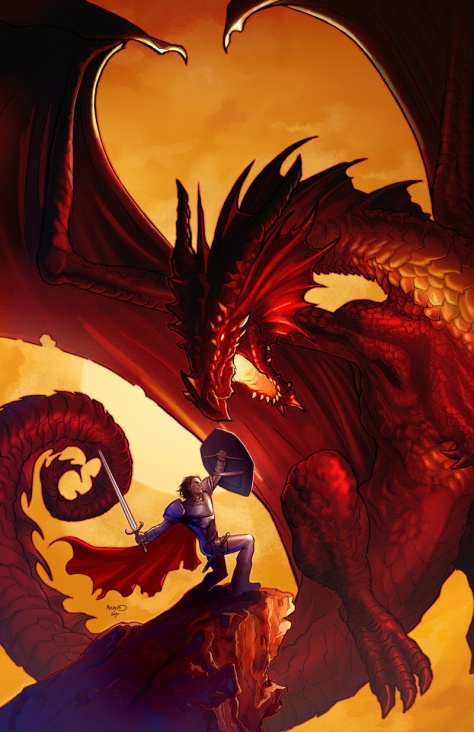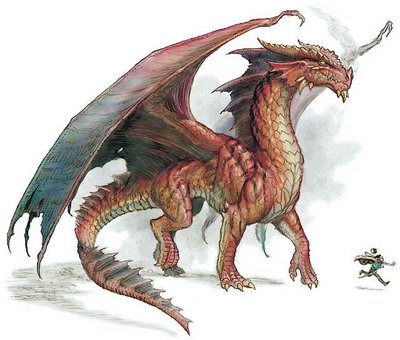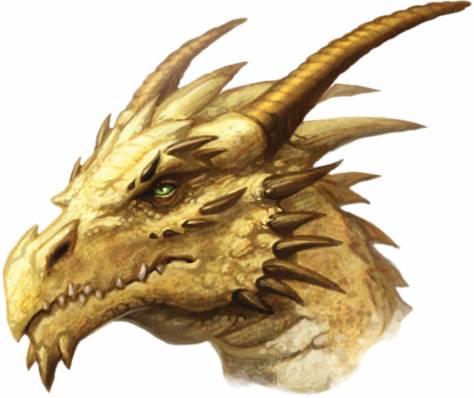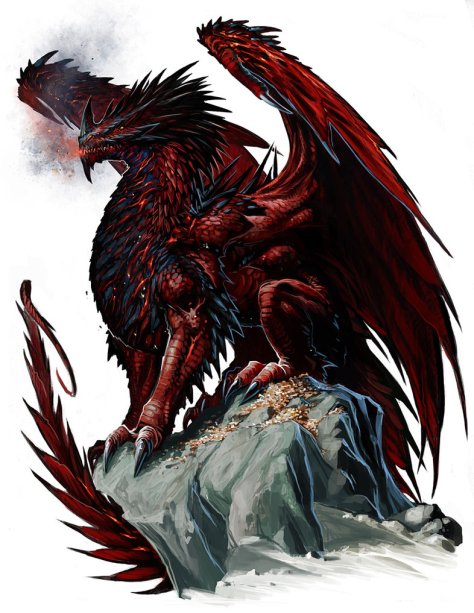 “if a man wishes to become a hero, then the serpent must first become a dragon: otherwise he lacks his proper enemy.” – Friedrich Nietzsche
“if a man wishes to become a hero, then the serpent must first become a dragon: otherwise he lacks his proper enemy.” – Friedrich Nietzsche
I was circling around my room for quite some time thinking about what would be a good topic to start my lore blog about, after I thought that I am about to pass out from dizziness the thought of these peculiar mythical beasts has struck me.
Not just any beasts, mind you, for we will be indulging into the kind that popularized them even more so than ever before. We are of course talking about the one and only rulers of dungeons and skies, from the most popular role playing setting in the world, Dungeons & Dragons (they are in the title for a reason, right?) To me no other fantasy setting gives more respect and showcases the splendor and menace of dragons better than D&D does.
However what truly makes them the awesome foes that they are is not from the fact that they are gigantic magical beings that breathe elements (for fire is by far not their only tool), but because most of them possess intellect and cunning far greater than that of an average human being. Cunning, calculating and clever, sometimes downright cold in their reasoning. All these facts combined make them one of the greatest adversaries of mankind ever created in fantasy.
Dragons in D&D are widely believed to be descendants of gods themselves, more precisely “a” god, by the name of Io. He wanted to create something more than a race of beasts. Something that will not bend their knee to the elements, but the ones that control them instead. In other words, a being that would not serve the primordial, but govern them. To achieve that, the god had to mold together a creature with enough strength and willpower to overcome the wild, untamed power of the elements.
And so the reign of dragons begun.
Many versions of said story has been floating around for generations, passed around by the dragons themselves; their “good” counterpart, called the metallic dragons, believe that when Io was creating them, he was in a different mood each time, and the created creature would reflect some of his personality. That is why when Io was feeling compassionate and altruistic, the good dragons took a metallic appearance, but when he was feeling vengeful, angry, or overcome by desire, these dark thoughts eventually transformed some of the dragons into chromatics. (In 4th edition D&D we were also introduced to the catastrophic and scourge dragons, but we will touch upon those at a different time).
All good things must come to an end eventually, and while all the dragons enjoyed peace among themselves for a long time, that too has ended, when the Dawn War broke out. Io has battled evil alongside his children, who in turn led the army of mortals, but as the battle progressed even Io met his equal in the form of Erek-Hus, The King of Terror. After a fierce battle Io was slain, his body shattered into two clean pieces. When he fell, from his broken body arose two dragons: Bahamut the just and Tiamat the avaricious. The two “halfs”, now deities, taking over their father’s divine spark (how that happened is still unexplained clearly) fought Erek-Hus and together avenged their father. Yet after the battle the two almost immedietly started to see their inescapable differences, and soon began fighting among themselves. After a couple days of battle Bahamut was the victor, making the wounded Tiamat flee deep into the world of Tytherion. After Tiamat regenerated her strength she sought to battle Bahamut once more to continue their fight over supremacy, this time with an entire brood of chromatic dragons at her back that the good aligned metallics clearly opposed. Over time, however, the battles grew more sporadic, with either side failing to annihilate the other (Tiamat wouldn’t settle for anything less, I assume). Eventually all encounters died down to a minimum, The race of dragons has also dwindled down over millenia which probably played a major factor in that as well. However the conflict was never forgotten, and the two factions still hold a deep rivalry and hatred for each other, old tensions die hard, after all.
“Io had made dragonkind too strong, too proud, to surrender its will to any cause for long, or to acknowledge the dominion of others – even their own kind.”
D&D 4th Edition Draconomicon – Metallic Dragons
2. Beyond Good & Evil
As mentioned earlier, metallic dragons were shaped from Io’s goodie sides, while chromatics supposedly inheriting the bad-boy genes. However, dragons in D&D are far more complex than that, so encountering a gold dragon in its lair doesn’t mean you will leave it with a bag full of candy and magical souvenir’s, at least not as often as you would think.
In short, good and evil have many shades, and in the world of D&D testifies to that.That proud gold dragon might shoo you away quicker than you think, and in some extreme cases devour you outright if he doesn’t like your tone.
The same can be applied to their chromatic brothers; that fearsome red dragon you heard such dreadful stories about might be curious and entertained by your presence enough that he might decide to help you in your endavour instead of making you his lunch, such accurances are rare, however, and I would not recommend expecting too much generocity.
 Meet Firkraag, one of my favorite dragons of all time from Baldur’s Gate II. He’s also voiced by Winnie The Pooh, what’s not to love?
Meet Firkraag, one of my favorite dragons of all time from Baldur’s Gate II. He’s also voiced by Winnie The Pooh, what’s not to love?
As you can see when you combine millenia of superiority and tremendous power that only grows as you age, you become the prime suspect for vanity and hubris. Especially when you are a monstrous, 70 feet long lizard with wings and a breath full of deadly vapors (fun fact: Dragons in D&D are actually more akin to mammals than reptiles [except for the fact that they lay eggs, of course], they are actually warm blooded, and they prefer postures much more simillar to our quadrupedal cousins).
All dragons can be prone to anger and rash actions no matter their color, and both kinds have seen enough brutality and violence (including among themselves) to have a firm grip on reality and know that meddling in mortal affairs, and/or assisting them can often backfire badly. Not to mention, most dragons have a very machiavellian approach on life (it happens when you start to live for millenia). To them a couple hundred years is merely a snooze, and if ruining something in the “now” (like wiping you and your party out of existence) proves to him to be beneficial in the grand scheme of things, they will not hesitate to do it.
3. The Cycle of Life
Several thousand years. That is the average lifespan of a dragon, with metallics often living half again as long. As you can probably understand your lifespan means pretty much nothing to them, no matter what race you are, so you better heed your words before asking for that new shiny armor that he has been sleeping on for the past 300 years.
Dragons aren’t born as hulking beasts right away though. They have a very distinct lifetime period that goes like this:
Wyrmling < Young < Adult < Elder < Ancient < Twilight.
 Isn’t he cute? No, not really.
Isn’t he cute? No, not really.
Except for the Twilight phase, the dragon grows in power as it ages. Encountering an ancient dragon is a scary thought even for the greatest of adventurers.Entire countries and lands can be wiped out from existence and left devastated for years when an ancient dragon unleashes his fury.
 Because he grows up to become this
Because he grows up to become this
Fear not, as many dragons, especially chromatics, don’t even get to experience the pinnacle of their power as an ancient, as many are eventually bested by either entire armies or particularly bold and powerful (sometimes lucky) heroes while still an adult or elder, these too, however, are nothing to sniff at, and I would recommend some serious leveling up before engaging even the lesser of our reptilian friends. But even dragons cannot escape the inevitable circle of life (if you want to que up Elton John now is the time), and after millenia of greatness they, too, wither away and die, eventually (unless they decide to become dracoliches but that’s an entirely different story).
Interesting fact, is that “evil” dragons, unlike their metallic cousins cannot trigger their own death (yes, metallics can actually turn on a death switch if they feel like they are getting weaker from age or mortally wounded) which is most likely another reason as to why chromatics are more prone to go on rampages when they are tired of living or feel their power will soon start to diminish, after all, who wants to live forever, right? Also, if there is anything that we learned from action movies, is that what better way is there to go out than in a blaze of glory? Terryfying, often morbid glory with hundreds of casualties in its way, but still.
4. Closing Thoughts
In all honesty I have just barely touched the tip of the iceberg that is dragon lore, especially in D&D which truly has one of the most vast resources on the topic that spreads across many different universes, but I hope I have given you at least some general idea about these mythical beasts.
To me dragonkind in the D&D universe will always remain incredibly fascinating, and are what I imagine when I picture a dragon in my head, with all their majestic, yet fearsome and proud endavour.
I hope to write many more articles about them, because we still have much more to talk about, including their psychology, what drives them, and why are they so damn awesome. if there is anything in particular in the topic of D&D you would like me to delve into, or if you feel like I missed something crucial, feel free to comment, your criticism is always welcome here.
Thank you for reading, and I hope to see you in my future articles.
 “Dragons are superior beings: more powerful, more intelligent, more worthy of wealth and territory, and more important than any other mortal creature. To them, this conviction is more than a dogmatic belief; it’s a fundamental fact, something they are born knowing, and a cornerstone of their personality and worldview. This aspect makes dragons seem arrogant when they interact with humanoids, but it goes beyond any human conception of conceit. To try to humble a dragon is like trying to talk the wind out of blowing or attempting to persuade a starving person not to die of deprivation”
“Dragons are superior beings: more powerful, more intelligent, more worthy of wealth and territory, and more important than any other mortal creature. To them, this conviction is more than a dogmatic belief; it’s a fundamental fact, something they are born knowing, and a cornerstone of their personality and worldview. This aspect makes dragons seem arrogant when they interact with humanoids, but it goes beyond any human conception of conceit. To try to humble a dragon is like trying to talk the wind out of blowing or attempting to persuade a starving person not to die of deprivation”
– D&D 4th Edition Draconomicon – Chromatic Dragons

